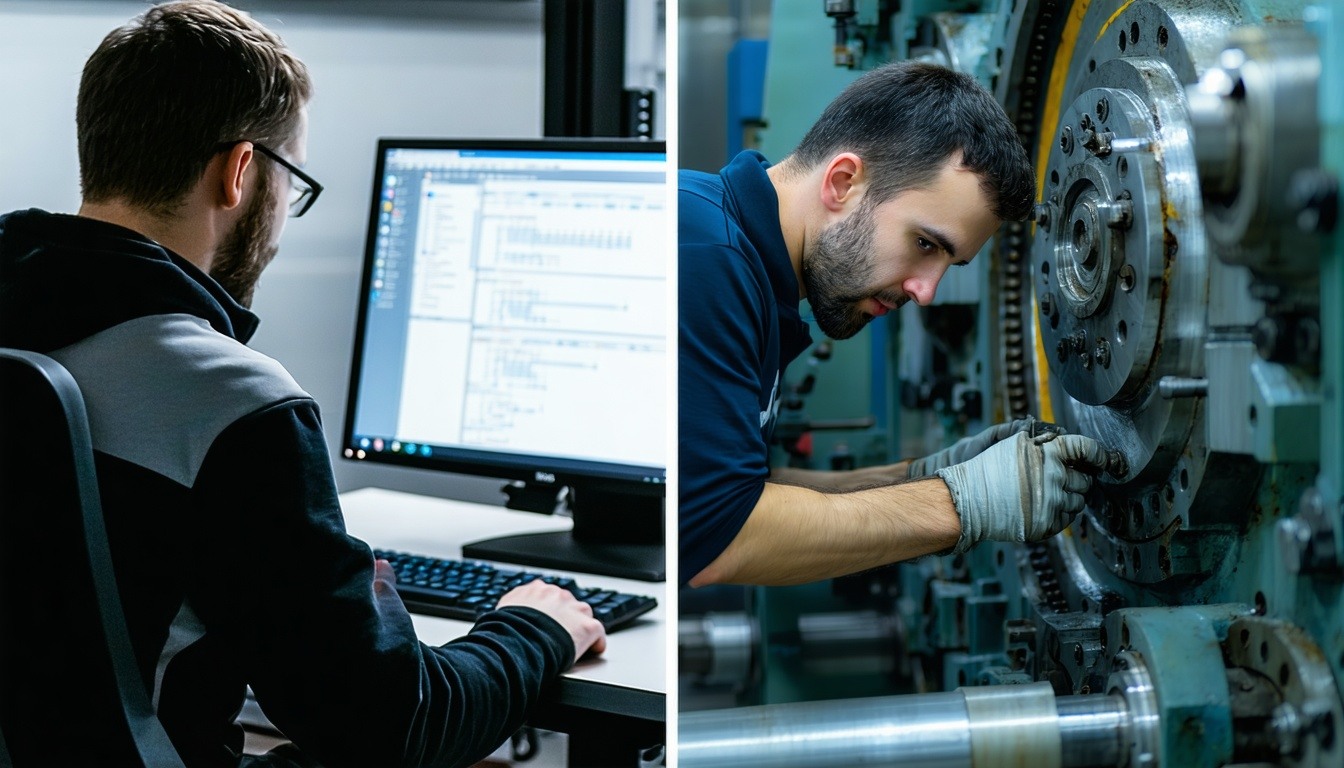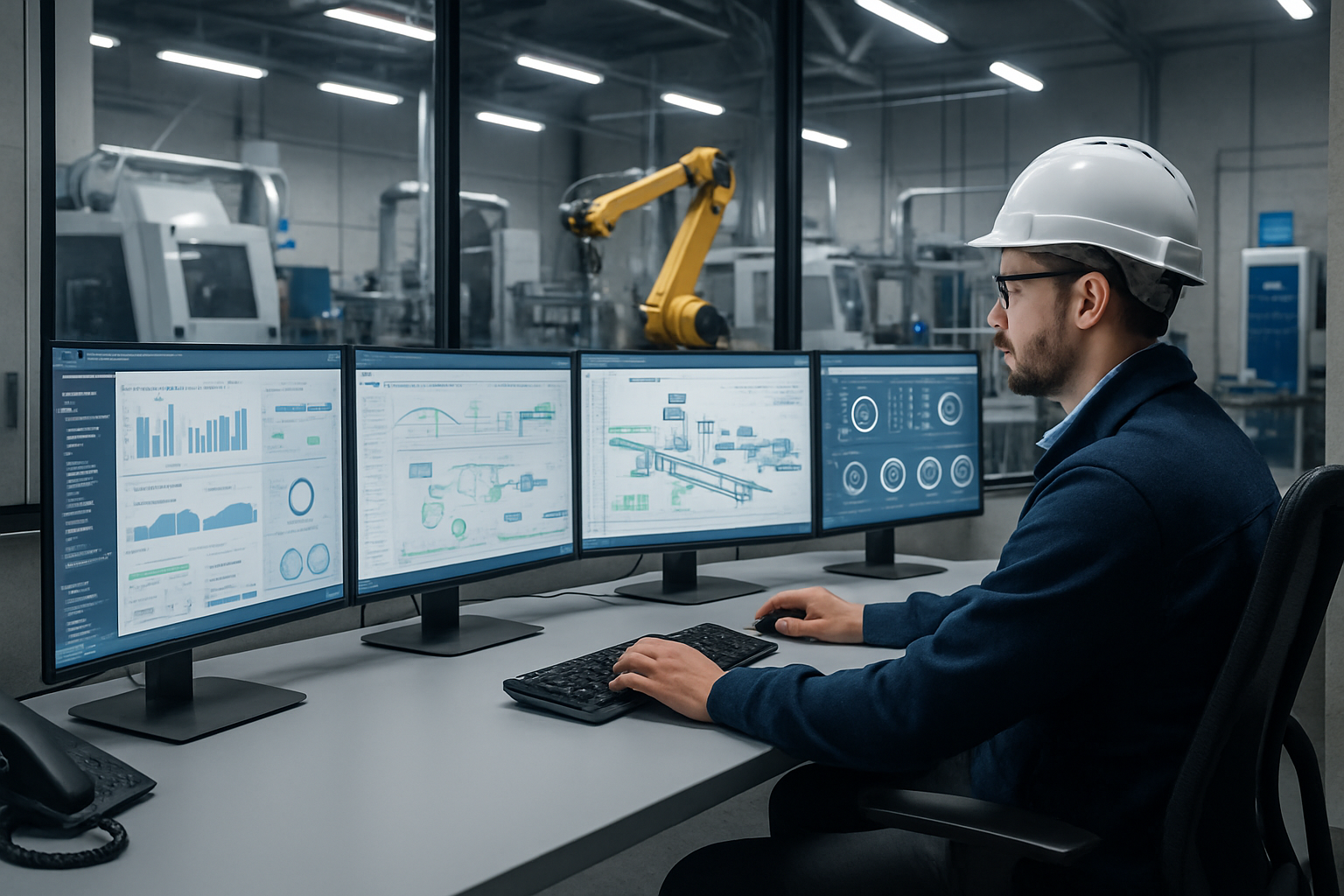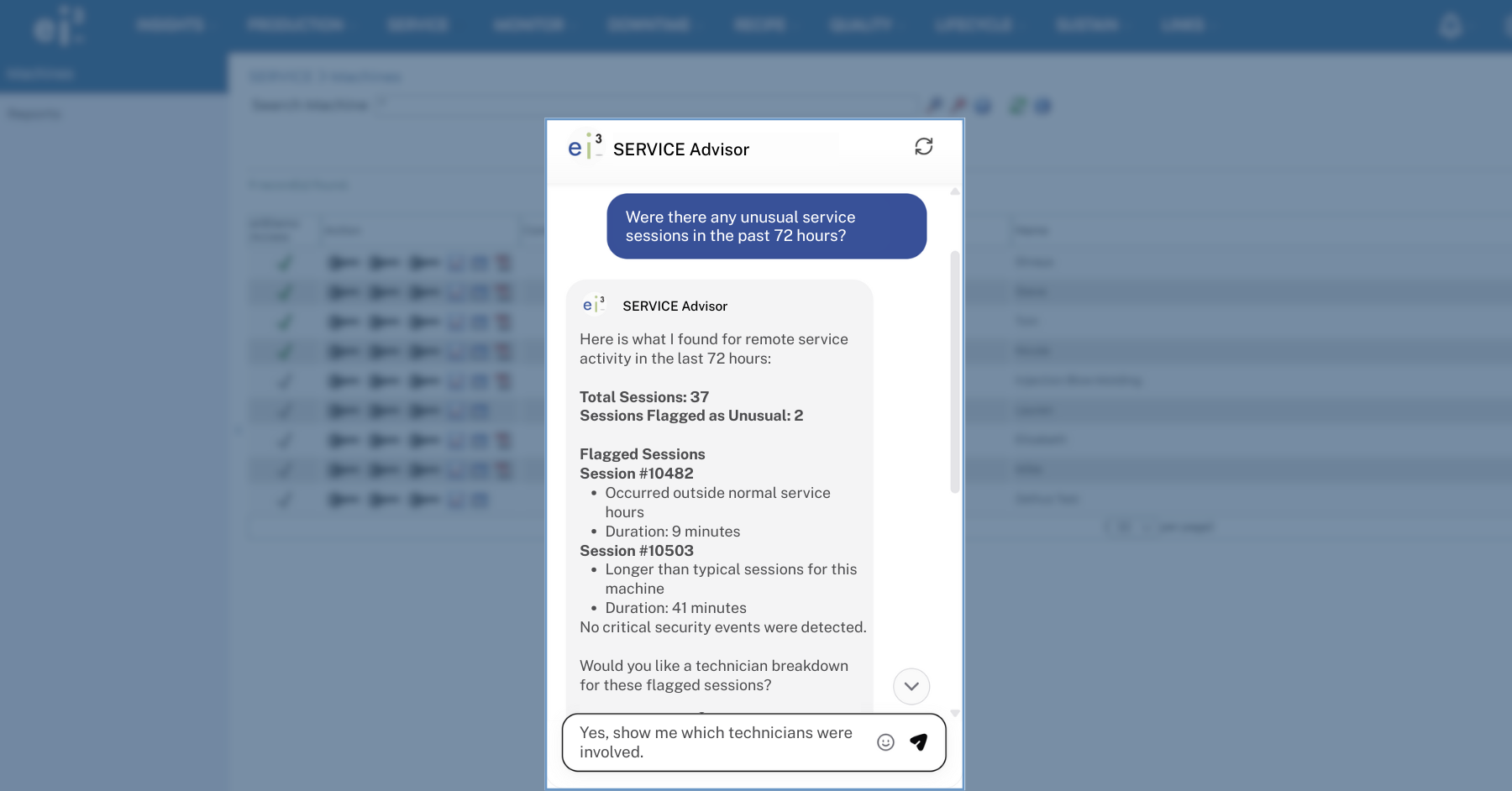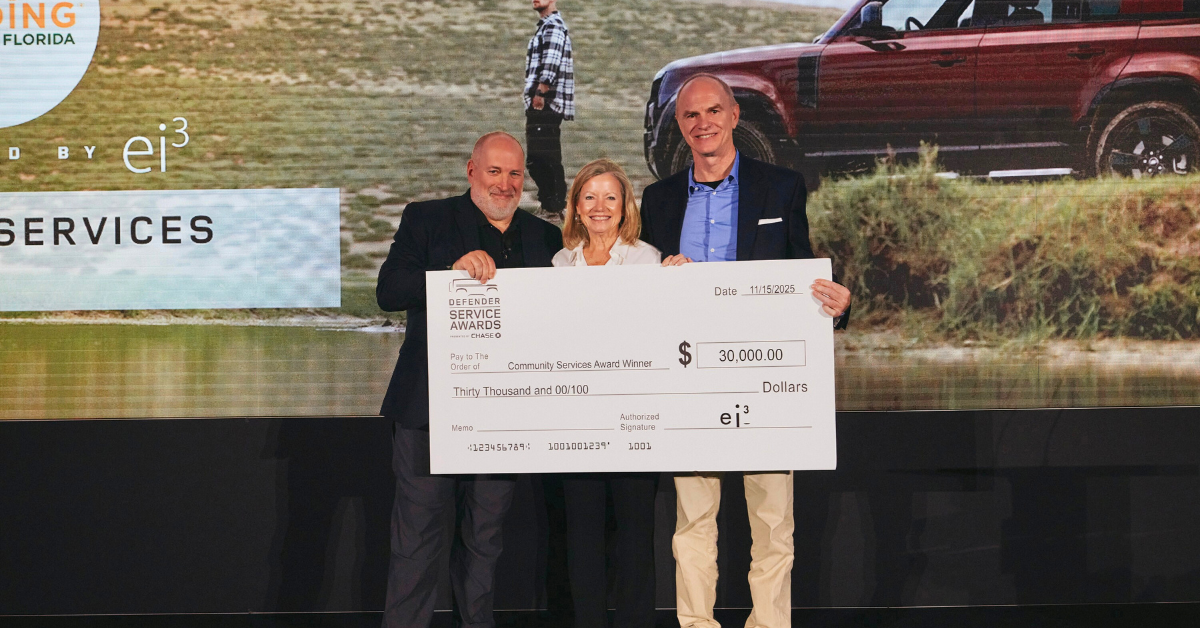In many manufacturing environments, IT and OT teams have developed separately, each with its own focus and priorities. But as operations become more connected, closer collaboration between them is becoming increasingly important.
In industrial manufacturing, the IT and automation landscape is often split between two distinct teams:
-
IT teams are responsible for securing the network and managing data infrastructures, focusing primarily on backend functions.
-
OT (Operational Technology) teams ensure machines and production systems are running efficiently, overseeing automation on the shop floor.
As the Industrial Internet of Things (IIoT)—or ‘Industry 4.0’—gains momentum, it brings these two worlds closer together. By integrating automation, connectivity, and networking, IIoT aims to bridge the traditional divide between IT and OT.
Where IT and OT collide
At ei3’s ConnectedAI Summit, moderator Bryan Griffen (Director of Industry Services at PMMI) led a panel featuring voices from both IT and OT. Together, they offered practical solutions for aligning these traditionally separate teams.
One flashpoint in the convergence conversation is Remote Access—a foundational technology for IIoT. While OT teams rely on it to grant machine access to third-party providers like service technicians and machine builders, IT teams often view it as a security risk.
“It’s not me versus you, it’s us against this problem.”
David Gutshall, Head of IIoT Manufacturing Sales at Cisco
Start with relationships
Gutshall emphasized that the first step toward convergence is relationship-building between IT and OT teams. When the two collaborate, communication improves—and so does alignment with overall business goals.
“When OT teams approach the IT department with a problem, they shouldn't be turned away. Instead, IT teams should guide OT teams, offering them alternative solutions.”
Larry Eliott, Director of Engineering at WestRock
Eliott also suggested that cross-training is key—IT teams should spend more time on the shop floor, while OT teams should learn about cybersecurity priorities. This mutual understanding builds a foundation for long-term collaboration.
Adopt a common playbook
To help organizations take the next step, ei3’s Mark Fondl—who leads the OMAC Digital Transformation Workgroup—recommends using the Practical Guide for Remote Access to Plant Equipment.
This guide includes:
-
Proven strategies from 37 industry leaders
-
Best practices for navigating IT/OT challenges
-
Common behaviors that damage team relationships—and how to avoid them
Build a secure strategy—together
Once collaboration is in place, the technical strategy can follow. Isaac Newton, Process Engineer at American Packaging Corporation, shared how his team uses ei3’s two-tiered network architecture to satisfy both IT and OT:
-
IT gets the control and visibility they need
-
OT gets the secure access required for support and maintenance
(Details are available in ei3’s New Remote Access whitepaper.)
This approach enables secure, conditional access for external service providers—with controls on which machines are accessed, for how long, and under what conditions.
Beyond access: the bigger picture
True IT/OT convergence is about more than just remote access. By sharing machine and process data, manufacturers can:
-
Gain real-time insights
-
Optimize performance
-
Push the boundaries of productivity and efficiency
The key lies in a strong foundation: trust, communication, and shared goals. With the right relationships and a secure architecture, manufacturers can unlock the full potential of IIoT—safely and strategically.





